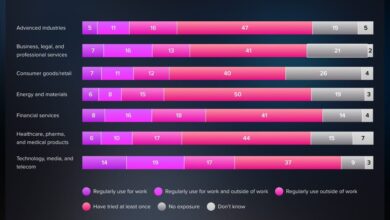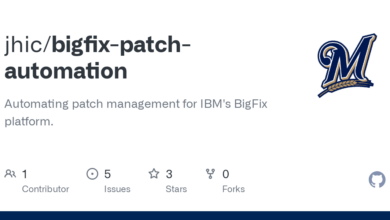
Vulnerability Management is More Than Checking a Box
Vulnerability management is more than checking a box; it’s a continuous, evolving process that demands a proactive, holistic approach. Thinking it’s just about running a scan and fixing what pops up is dangerously naive. This isn’t about ticking off items on a list; it’s about building a resilient security posture that anticipates threats and adapts to the ever-changing landscape of cyber risks.
Let’s dive into why a deeper understanding is crucial for your organization’s survival.
This post will explore the limitations of a purely checklist-based approach, the importance of understanding the vulnerability lifecycle, and the proactive measures needed to truly secure your systems. We’ll discuss integrating vulnerability management into your business strategy, fostering a security-conscious culture, and leveraging technology effectively. Ultimately, we’ll show you how to move beyond simple compliance and build a robust, resilient security program that truly protects your assets.
The Limitations of a Checklist Approach: Vulnerability Management Is More Than Checking A Box

Vulnerability management is often perceived as a simple checklist exercise: run a scan, fix the reported vulnerabilities, and you’re done. However, this simplistic view overlooks the complex reality of securing systems and applications. Relying solely on automated tools and pre-defined checklists significantly limits the effectiveness of a vulnerability management program, leaving organizations vulnerable to sophisticated attacks.Automated vulnerability scanners and checklists provide a valuable starting point, offering a baseline assessment of known vulnerabilities.
However, their inherent limitations can lead to significant security gaps. These tools typically focus on identifying known vulnerabilities based on signature matching and predefined rules. They are excellent at finding common weaknesses, but their effectiveness diminishes when facing zero-day exploits, custom-developed malware, or vulnerabilities that manifest only under specific circumstances.
Vulnerabilities Missed by Automated Systems
Automated systems often fail to detect vulnerabilities that require deeper analysis beyond simple signature matching. For example, a misconfigured access control list (ACL) that grants excessive privileges to a specific user might not trigger an alert in a standard vulnerability scan, even though it represents a significant security risk. Similarly, logic flaws in custom-developed applications or subtle vulnerabilities in the interaction between different software components are often missed by automated tools.
Another example is social engineering vulnerabilities; these rely on human interaction and manipulation, and are therefore completely outside the scope of automated scanning tools. Finally, vulnerabilities related to insecure coding practices that do not result in readily exploitable flaws may go unnoticed by automated scanners.
The Critical Role of the Human Element
Effective vulnerability management requires a significant human element. Security professionals bring critical thinking, context awareness, and the ability to interpret scan results within the broader organizational context. They can assess the risk associated with each vulnerability, prioritize remediation efforts based on business impact, and identify vulnerabilities that automated tools might miss. Furthermore, humans are essential for developing and implementing security policies, training employees on security best practices, and conducting security awareness campaigns.
The human element bridges the gap between technical detection and effective risk mitigation.
Consequences of a Purely Checklist-Based Approach
Imagine a scenario where a financial institution relies solely on automated vulnerability scans to manage its security posture. The scanners identify several low-risk vulnerabilities, which are addressed according to a predefined priority list. However, a critical vulnerability related to a poorly configured database server remains undetected because it doesn’t match any known signatures. A sophisticated attacker exploits this vulnerability, gaining unauthorized access to sensitive customer data.
The resulting data breach leads to significant financial losses, reputational damage, and regulatory penalties. This scenario highlights the catastrophic consequences of a purely checklist-based approach to vulnerability management, demonstrating the crucial role of human expertise and a more holistic strategy.
Understanding the Vulnerability Lifecycle
Effective vulnerability management isn’t a one-time event; it’s an ongoing process. Think of it as a continuous cycle of identifying, assessing, prioritizing, remediating, and verifying vulnerabilities. Understanding this lifecycle is crucial for building a robust security posture. A reactive approach, waiting for exploits to happen, is far less effective than a proactive strategy that anticipates and mitigates risks before they materialize.
Managing vulnerabilities effectively requires a structured approach. This involves a well-defined process from initial discovery through to final verification of remediation. Ignoring any step in the cycle leaves significant gaps in your security defenses, potentially exposing your organization to significant risk.
A Step-by-Step Vulnerability Management Process
The vulnerability management lifecycle can be broken down into several key stages. Each stage is crucial and requires careful attention to detail. Failure at any stage can significantly weaken the overall effectiveness of the program.
- Identification: This involves actively scanning systems and applications for known vulnerabilities using automated tools and manual penetration testing. Regular vulnerability scanning is critical, utilizing tools that cover a wide range of potential weaknesses.
- Assessment: Once vulnerabilities are identified, they need to be assessed to determine their severity and potential impact. This involves considering factors such as the vulnerability’s exploitability, the potential damage it could cause, and the likelihood of exploitation.
- Prioritization: Based on the assessment, vulnerabilities are prioritized. Critical vulnerabilities, those posing the greatest risk, should be addressed first. Risk assessment frameworks like NIST’s Risk Management Framework can guide this process.
- Remediation: This is the process of fixing the identified vulnerabilities. This could involve patching software, configuring security settings, or implementing compensating controls. Thorough testing after remediation is essential to ensure the fix is effective.
- Verification: After remediation, it’s crucial to verify that the vulnerability has been successfully mitigated. Rescanning the system and confirming the vulnerability is no longer present is a necessary final step.
- Reporting and Monitoring: Regular reporting on the status of vulnerabilities and the effectiveness of remediation efforts is essential for ongoing improvement. Continuous monitoring is crucial to detect new vulnerabilities as they emerge.
Comparison of Vulnerability Management Methodologies
Different organizations employ various methodologies for vulnerability management, each with its own strengths and weaknesses. The choice of methodology often depends on factors such as budget, technical expertise, and organizational size.
| Methodology | Strengths | Weaknesses | Implementation Cost |
|---|---|---|---|
| Vulnerability Scanners (e.g., Nessus, OpenVAS) | Automated, efficient, cost-effective for initial identification | False positives, may miss complex vulnerabilities, requires skilled interpretation | Low to Moderate |
| Penetration Testing | Identifies real-world exploitable vulnerabilities, provides in-depth analysis | Time-consuming, expensive, requires highly skilled professionals | High |
| Vulnerability Management Platforms (VMPS) | Centralized management, automated workflows, reporting and analytics | Can be complex to implement and manage, high initial investment | Moderate to High |
| Manual Vulnerability Assessments | Highly customized, can target specific concerns | Time-consuming, labor-intensive, susceptible to human error | Moderate to High |
The Importance of Risk Assessment in Prioritization, Vulnerability management is more than checking a box
Risk assessment is crucial for effectively prioritizing vulnerabilities. It involves analyzing the likelihood of a vulnerability being exploited and the potential impact of a successful exploit. This allows organizations to focus their resources on addressing the most critical threats first. For example, a vulnerability with a high likelihood of exploitation and a high potential impact (like a remote code execution flaw in a critical system) should be prioritized over a vulnerability with a low likelihood and low impact (like a minor cross-site scripting vulnerability on an internal, non-critical website).
Communicating Vulnerability Information to Stakeholders
Effective communication is essential for successful vulnerability management. Different stakeholders require different levels of detail. Technical teams need detailed vulnerability information, while executive management needs a high-level summary of the risks and mitigation plans. Regular, clear, and concise communication ensures everyone is informed and can contribute effectively to the overall security posture. This might involve using dashboards, regular reports, and tailored briefings for different audiences.
Beyond the Scan
Vulnerability scanning is a crucial first step in any robust security posture, but it’s only the beginning. Thinking of vulnerability management as simply checking a box misses the larger picture of proactive, continuous improvement. A truly effective approach requires a shift from reactive patching to a proactive, preventative mindset. This involves understanding the bigger context of your attack surface and implementing strategies that go beyond the limitations of automated scans.Regular vulnerability scanning provides a snapshot in time, identifying known weaknesses.
However, it doesn’t account for zero-day exploits, custom-built malware, or sophisticated social engineering attacks. To truly bolster your security, you need to implement proactive measures that address these gaps.
Three Proactive Security Measures Beyond Vulnerability Scanning
Proactive security isn’t just about reacting to alerts; it’s about anticipating and mitigating threats before they can exploit vulnerabilities. This requires a multi-layered approach, combining technical solutions with robust security policies and employee training.
- Security Awareness Training: Regular, engaging security awareness training is paramount. Employees are often the weakest link in the security chain. Training should cover phishing scams, social engineering tactics, password hygiene, and the importance of reporting suspicious activity. Effective training programs utilize interactive modules, simulated phishing attacks, and regular reinforcement to keep security top-of-mind. For example, a program might include realistic phishing emails to gauge employee response and provide immediate feedback on proper reporting procedures.
- Threat Modeling: Threat modeling is a structured process for identifying potential security vulnerabilities in a system or application before it’s deployed. This proactive approach involves brainstorming potential threats, analyzing their likelihood and impact, and designing security controls to mitigate the risks. A common threat modeling technique is STRIDE (Spoofing, Tampering, Repudiation, Information Disclosure, Denial of Service, Elevation of Privilege).
By systematically working through these categories, developers can identify and address potential vulnerabilities early in the development lifecycle, saving significant time and resources later.
- Regular Security Audits and Penetration Testing: While vulnerability scanning identifies known vulnerabilities, penetration testing simulates real-world attacks to uncover weaknesses that scanners might miss. Regular security audits, performed by internal or external security experts, provide a holistic assessment of the organization’s security posture, identifying gaps in policies, procedures, and technology. For instance, a penetration test might focus on exploiting vulnerabilities in a web application, while a security audit might review the organization’s access control policies and incident response plan.
Penetration Testing vs. Vulnerability Scanning
Penetration testing and vulnerability scanning are both important components of a comprehensive security program, but they serve different purposes. Vulnerability scanning is automated and identifies known vulnerabilities based on a database of known exploits. Penetration testing, on the other hand, is a more manual and targeted approach, simulating real-world attacks to identify vulnerabilities that automated scanners might miss. Vulnerability scanning is like a general health check-up, while penetration testing is like a specialized medical examination focusing on specific areas of concern.
The former is broader, faster, and less expensive; the latter is more targeted, deeper, and more expensive. Both are necessary for a complete picture of your security posture.
Secure Software Development Best Practices
Secure software development is not an afterthought; it’s a fundamental aspect of building secure systems. Integrating security practices throughout the software development lifecycle (SDLC) is critical to reducing vulnerabilities.
- Secure Coding Practices: Developers should follow secure coding guidelines to prevent common vulnerabilities such as SQL injection, cross-site scripting (XSS), and cross-site request forgery (CSRF). This includes using parameterized queries, input validation, and output encoding.
- Code Reviews: Regular code reviews by peers can identify security vulnerabilities before they reach production. This collaborative approach ensures that multiple eyes examine the code for potential weaknesses.
- Static and Dynamic Application Security Testing (SAST/DAST): SAST analyzes source code for vulnerabilities without executing the code, while DAST tests the running application to identify vulnerabilities in the deployed system. Both techniques are complementary and help catch different types of vulnerabilities.
- Continuous Integration/Continuous Delivery (CI/CD): Integrating security testing into the CI/CD pipeline ensures that security checks are performed automatically throughout the development process, catching vulnerabilities early and preventing them from reaching production.
Establishing a Robust Vulnerability Disclosure Program
A well-structured vulnerability disclosure program (VDP) encourages ethical hackers to report security vulnerabilities responsibly. This program should clearly define the scope of acceptable disclosures, provide a secure channel for reporting, and Artikel a timeline for response and remediation. A successful VDP builds trust with the security community and reduces the risk of vulnerabilities being publicly disclosed without prior notice, potentially causing significant damage.
It’s crucial to provide clear guidelines on what constitutes acceptable reporting, a timeline for response, and a process for rewarding responsible disclosure. Examples include providing financial rewards or publicly acknowledging contributors. This fosters a positive relationship with the security research community.
Integrating Vulnerability Management into the Business
Vulnerability management isn’t just a security function; it’s a critical business enabler. A robust program directly impacts the bottom line by reducing risk, improving operational efficiency, and protecting brand reputation. Integrating it effectively requires a strategic approach that aligns with overall business goals and demonstrates a clear return on investment.Integrating vulnerability management effectively requires understanding its impact across the entire organization.
It’s not simply about patching systems; it’s about building a culture of security awareness and embedding proactive risk mitigation into every business process. This involves collaboration across IT, development, and business units to ensure a holistic approach.
Aligning Vulnerability Management with Business Objectives
A successful vulnerability management program must be directly tied to the organization’s strategic goals. For example, if a company prioritizes customer data privacy, its vulnerability management program should focus heavily on protecting sensitive data. If a company relies heavily on its online infrastructure, its program should prioritize the availability and resilience of its systems. This alignment ensures that resources are allocated effectively and that the program delivers tangible value to the business.
Consider using a risk assessment framework like NIST Cybersecurity Framework to map vulnerabilities to business objectives. This creates a clear link between security and business priorities.
Integrating Vulnerability Management into the Software Development Lifecycle (SDLC)
Shifting security left, meaning integrating security practices early in the SDLC, is crucial. This involves incorporating vulnerability scanning and penetration testing into each phase, from design and development to testing and deployment. For example, static and dynamic application security testing (SAST/DAST) can identify vulnerabilities early in the development process, reducing the cost and effort of remediation later. Implementing a secure coding standard and training developers on secure coding practices is also paramount.
Regular security reviews of code and infrastructure during the development process can prevent vulnerabilities from ever reaching production. The use of automated security tools integrated into CI/CD pipelines helps accelerate this process and improves efficiency.
Demonstrating the Return on Investment (ROI) of a Vulnerability Management Program
Demonstrating ROI is vital for securing ongoing funding and support. This involves quantifying the costs of vulnerabilities (e.g., downtime, fines, legal fees, reputational damage) and comparing them to the cost of implementing and maintaining a vulnerability management program. For instance, preventing a single data breach that could cost millions of dollars easily justifies the investment in a comprehensive program.
Tracking key metrics like the number of vulnerabilities remediated, the time taken to remediate vulnerabilities, and the reduction in security incidents can help demonstrate the program’s effectiveness and its positive impact on the bottom line. Presenting this data visually, using graphs and charts, can significantly improve communication and demonstrate value to stakeholders.
Key Performance Indicators (KPIs) for Vulnerability Management
A well-defined set of KPIs is crucial for measuring the effectiveness of the program and identifying areas for improvement.
| KPI | Description | Measurement | Target |
|---|---|---|---|
| Mean Time To Remediation (MTTR) | Average time to fix a vulnerability. | Days/Hours | < 7 days (example) |
| Number of Critical Vulnerabilities | Count of high-severity vulnerabilities. | Count | < 10 (example) |
| Vulnerability Remediation Rate | Percentage of vulnerabilities remediated within a defined timeframe. | Percentage | > 90% (example) |
| Number of Security Incidents | Count of security breaches or incidents. | Count | Decreasing trend |
Building a Culture of Security
Building a robust vulnerability management program isn’t just about technology; it’s about people. A security-conscious culture, where employees actively participate in protecting the organization’s assets, is the strongest defense against threats. This requires a multifaceted approach that incorporates training, incentives, and strong leadership.Security awareness is not a one-time event; it’s an ongoing process. A successful security culture requires consistent reinforcement and engagement from all levels of the organization.
This goes beyond simply checking boxes on a compliance checklist; it necessitates a fundamental shift in mindset, where security is viewed not as an impediment, but as a shared responsibility.
Security Awareness Training Best Practices
Effective security awareness training needs to be engaging, relevant, and tailored to the specific roles and responsibilities of employees. Generic, one-size-fits-all training is often ineffective. Instead, training should incorporate interactive modules, simulations, and real-world examples to illustrate the potential consequences of security breaches. Regular refresher courses, incorporating updated threats and best practices, are also crucial. For example, training could include interactive scenarios simulating phishing attacks, helping employees recognize and report suspicious emails.
Furthermore, gamification can increase engagement and knowledge retention. A points-based system, leaderboards, or even small prizes can incentivize participation and improve knowledge retention. Finally, the training should be easily accessible and available on various devices, catering to different learning styles and preferences.
Incentivizing Vulnerability Reporting
A robust vulnerability reporting program is essential for proactively identifying and mitigating risks. Employees should feel comfortable and empowered to report potential security issues without fear of retribution. This requires a clear, well-defined process for reporting vulnerabilities, ensuring confidentiality and anonymity where appropriate. A well-structured program should include multiple reporting channels (e.g., email, dedicated portal, hotline), with clear guidelines on what constitutes a reportable vulnerability and the steps involved in the reporting process.
Incentivizing reporting, through rewards or recognition programs, can significantly increase the number of vulnerabilities reported. This could include things like gift cards, public acknowledgment, or even promotion opportunities. The key is to create a positive feedback loop that encourages proactive participation. For instance, a company might offer a tiered reward system, with larger rewards for more critical vulnerabilities discovered.
Leadership’s Role in Promoting Security
Leadership plays a crucial role in shaping the security culture of an organization. Leaders must actively champion security initiatives, demonstrating a clear commitment to security at all levels. This includes allocating adequate resources to security programs, publicly acknowledging and rewarding employees for their security contributions, and holding individuals accountable for security breaches. Leaders should lead by example, adhering to security policies and procedures themselves.
They must also create an environment where security is discussed openly and honestly, fostering a culture of trust and collaboration. For example, a CEO publicly acknowledging the importance of a security program and rewarding an employee who reported a critical vulnerability sends a powerful message throughout the organization. This visibility and support from the top down is critical for driving adoption and building a strong security culture.
The Role of Technology and Automation

Automation is revolutionizing vulnerability management, offering the potential to significantly improve efficiency and effectiveness. However, it’s crucial to understand both its capabilities and its limitations to build a robust and reliable security posture. Simply relying on automated tools without proper human oversight can lead to vulnerabilities slipping through the cracks and ultimately compromising your security.Automated vulnerability management tools can dramatically speed up the scanning and identification process, allowing security teams to analyze a far larger attack surface than would be possible manually.
This speed allows for quicker remediation of critical vulnerabilities, reducing the window of opportunity for attackers. However, the effectiveness of automation hinges on the quality of the tools and the context in which they are deployed.
Automated Vulnerability Management Tool Capabilities and Limitations
Automated tools excel at repetitive tasks like scanning systems for known vulnerabilities, comparing findings against vulnerability databases, and generating reports. They can provide a comprehensive overview of your security posture, highlighting areas of weakness. However, they struggle with context. A tool might flag a vulnerability, but it can’t always determine if that vulnerability is actually exploitable in your specific environment.
Automated tools also often generate a large number of false positives, requiring significant human intervention to filter and prioritize. This manual review is time-consuming and can lead to alert fatigue, ultimately diminishing the effectiveness of the automated system. Finally, zero-day vulnerabilities, by their nature, are unknown to automated scanners until after they’ve been discovered and documented.
The Importance of Human Oversight in Automated Systems
Human expertise remains indispensable in vulnerability management, even with advanced automation. Security professionals are needed to interpret the results of automated scans, prioritize vulnerabilities based on their potential impact and exploitability, and validate findings. They also play a crucial role in developing and maintaining the security policies and procedures that guide the automation process. This includes configuring the scanners, defining thresholds for alerts, and creating workflows for remediation.
Without human oversight, automated systems become just another tool producing data without providing actionable intelligence. Essentially, humans are required to make sense of the data and translate it into practical steps to improve security.
Common Vulnerability Management Tools and Technologies
The effectiveness of vulnerability management tools depends on several factors, including the size and complexity of your environment, your budget, and your team’s expertise. Selecting the right tool requires careful consideration of its strengths and weaknesses in the context of your specific needs.
Here are some examples of commonly used tools and technologies, along with their strengths and weaknesses:
| Tool/Technology | Strengths | Weaknesses |
|---|---|---|
| Nessus | Comprehensive vulnerability scanning, extensive vulnerability database, various reporting options. | Can generate many false positives, requires expertise to interpret results effectively, can be resource-intensive. |
| OpenVAS | Open-source alternative to Nessus, provides similar functionality at no cost. | May require more technical expertise to set up and maintain, community support may be less extensive than commercial options. |
| QualysGuard | Cloud-based platform, provides vulnerability management, compliance management, and security configuration assessment. | Subscription-based service, can be expensive, requires reliance on a third-party vendor. |
| Tenable.sc | Unified platform for vulnerability management, asset discovery, and compliance. | Complex to implement and manage, can be expensive. |
Responding to and Mitigating Vulnerabilities
Effective vulnerability management isn’t just about identifying weaknesses; it’s about responding swiftly and decisively when critical issues arise. A robust response plan, coupled with a variety of mitigation strategies, is crucial for minimizing the impact of vulnerabilities and protecting your organization. This involves understanding the vulnerability lifecycle, prioritizing risks, and having a well-defined incident response process in place.Responding to a critical vulnerability requires a structured and timely approach.
Delay can significantly increase the potential damage. A well-defined process ensures consistency and minimizes panic during a crisis.
Responding to a Critical Vulnerability: A Detailed Plan
A critical vulnerability demands immediate attention. The following plan Artikels a structured response:
- Initial Assessment: Immediately verify the vulnerability’s existence and severity using multiple sources. This includes confirming the vulnerability’s impact on your systems and the potential for exploitation.
- Containment: Isolate affected systems to prevent further compromise. This might involve network segmentation, disabling affected services, or temporarily taking systems offline.
- Notification: Inform relevant stakeholders, including management, security teams, and potentially affected users, depending on the scope of the vulnerability.
- Mitigation: Implement the most appropriate mitigation strategy (detailed below). This may be patching, implementing a workaround, or deploying compensating controls.
- Monitoring: Continuously monitor the affected systems and network for any signs of further exploitation or compromise. This involves actively looking for unusual activity and intrusion attempts.
- Post-Incident Review: After the immediate threat has been addressed, conduct a thorough post-incident review to identify weaknesses in the security posture and to improve future responses (discussed in detail below).
Vulnerability Mitigation Strategies
Several strategies exist for mitigating vulnerabilities, each with its own advantages and disadvantages. The best approach depends on the specific vulnerability, the criticality of the affected system, and the available resources.
- Patching: Applying official security patches is the most effective way to fix vulnerabilities. This requires careful planning and testing to avoid disruptions. For example, before deploying a patch to a production server, it’s crucial to test it thoroughly in a staging environment.
- Workarounds: If a patch isn’t immediately available or applying it would cause unacceptable downtime, a workaround can temporarily reduce the vulnerability’s impact. This might involve adjusting firewall rules, changing access controls, or disabling vulnerable features. A well-documented workaround should be considered a temporary solution, with patching remaining the ultimate goal.
- Compensating Controls: These are security measures that mitigate the risk of a vulnerability without directly addressing the root cause. Examples include implementing intrusion detection systems (IDS), increasing monitoring frequency, or adding multi-factor authentication. While compensating controls reduce risk, they should not replace patching or a proper workaround where possible.
The Importance of Incident Response Planning
A comprehensive incident response plan is essential for effective vulnerability management. This plan should Artikel procedures for identifying, containing, eradicating, recovering from, and learning from security incidents. Without a pre-defined plan, organizations often react haphazardly, increasing the potential for damage and extending recovery time. A well-defined plan reduces response time and ensures a coordinated effort. For instance, a plan should clearly define roles and responsibilities, communication protocols, and escalation procedures.
Conducting a Post-Incident Review: A Step-by-Step Process
A post-incident review is crucial for learning from past events and improving future responses. This involves a systematic examination of the entire incident lifecycle.
- Timeline Reconstruction: Create a detailed timeline of events, including the initial detection, containment efforts, and resolution. This provides a clear picture of what happened and when.
- Vulnerability Analysis: Determine the root cause of the vulnerability and identify any contributing factors. This might involve analyzing logs, network traffic, and system configurations.
- Impact Assessment: Evaluate the impact of the incident on the organization, including financial losses, reputational damage, and data breaches.
- Response Effectiveness: Assess the effectiveness of the response actions taken, identifying areas for improvement. This includes evaluating the speed and efficiency of the response.
- Recommendations: Develop specific recommendations to prevent similar incidents in the future. This might involve implementing new security controls, updating policies, or improving training programs.
- Documentation: Document the entire review process, including findings, recommendations, and implemented changes. This ensures that lessons learned are not forgotten and can be used to improve future responses.
Closing Summary
In short, effective vulnerability management isn’t a one-time task; it’s an ongoing journey. It requires a blend of automated tools, human expertise, a proactive mindset, and a commitment to building a security-conscious culture. By embracing a holistic approach, integrating vulnerability management into your business strategy, and continuously adapting to emerging threats, you can significantly reduce your organization’s risk and build a truly secure future.
Don’t just check the box—build a fortress.
Frequently Asked Questions
What’s the difference between vulnerability scanning and penetration testing?
Vulnerability scanning uses automated tools to identify potential weaknesses. Penetration testing simulates real-world attacks to assess exploitability and impact.
How often should I perform vulnerability scans?
Frequency depends on your risk tolerance and industry regulations, but regular scans (e.g., monthly or quarterly) are recommended.
What’s the best way to prioritize vulnerabilities?
Prioritize based on risk: likelihood of exploitation and potential impact. Consider using a risk scoring system.
How do I communicate vulnerability information effectively?
Tailor communication to the audience (technical vs. non-technical). Use clear, concise language and provide actionable recommendations.





